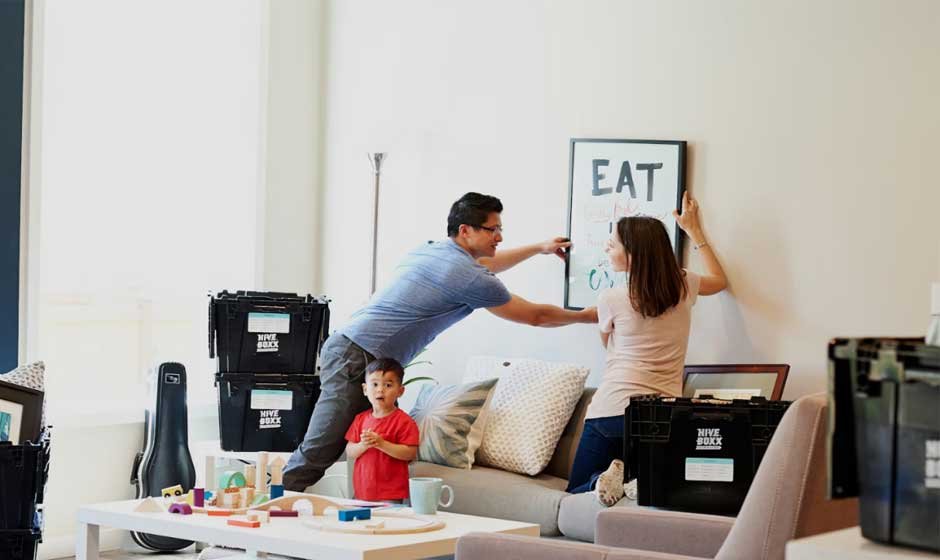Skip to the good bit
ToggleThe decision to relocate your family across the country brings a mix of excitement and apprehension—a new city means fresh opportunities, different scenery, and the chance to create memories in an unfamiliar place. Amid the anticipation, packing up and moving can take an emotional toll on both parents and children.
Successful cross-country moves don’t happen by accident. They require thoughtful preparation, smart organization, and a positive mindset. When families take time to plan each phase, from sorting possessions to settling into the new home, they often find that what seems daunting becomes manageable, even enjoyable. Let’s dive into ways to make your family’s long-distance relocation stress-free.
Preparing for the Move
Successful relocation starts well before your departure date. Start planning at least two months ahead so that you have ample time to organize possessions, research transportation options, and arrange necessary services at your destination. Unexpected challenges often arise during moves, so being flexible while keeping up with the organization is the best formula for a smooth experience. The earlier you prepare, the less chaos you have to deal with as you’re heading out the door.
Creating an Effective Timeline
Establishing a week-by-week schedule turns an overwhelming project into manageable chunks that can be tackled more easily. Start with tasks requiring longer lead times, such as researching housing options, school enrollment procedures, and utility transfer protocols. Dedicate specific blocks on your calendar for sorting through possessions, contacting service providers, and handling paperwork to prevent last-minute rushes that increase stress levels and compromise your decision quality.
Sorting and Downsizing Belongings
Moving is the perfect time to get rid of any superfluous items or lingering junk. Go through each room methodically, establishing clear categories for things you want to retain, donate, sell, or discard. And whether you hire movers or do everything yourself, using high-quality labels simplifies the entire process.
Plus, getting the whole family involved in sorting—at a level that suits their age—makes the move feel more exciting while also teaching important lessons about prioritizing and letting go. It’s a great way to clear out clutter before settling into your new home.
Making the Move Easier for Kids
Young ones typically deal with moving differently than grown-ups, and they need special consideration throughout the transition. Think about how you can involve your kids in age-appropriate aspects of the process to give them a sense of agency during this turbulent life event.
Maintaining consistent daily rhythms throughout the chaos provides crucial stability, and open communication helps address concerns and build positive anticipation for the upcoming change. Doing these things helps make your kids active participants in your newest household adventure as opposed to passive observers.
Helping Children Navigate Moving Transitions
Visual aids are very effective when explaining an upcoming relocation to youngsters—maps, photographs of the future residence, and books about relocating make abstract concepts more concrete for budding minds. As part of your strategy to moving with the kids, prepare them emotionally and celebrate small victories throughout the journey.
Also, create a countdown calendar marking important dates. This provides youngsters with a clearer understanding of the timeline and helps them mentally prepare for each stage of the transition.
Deciding Whether to Hire Movers or DIY
Professional relocation services offer expertise in efficiently packing, loading, and transporting possessions, which is especially valuable for coast-to-coast journeys. These experts understand proper securing techniques for long-distance transport and arrive equipped with appropriate tools and materials for the task.
Finding reliable and affordable transportation services requires thorough research, comparison, and price checking against your home’s needs. Doing it all on your own may seem more cost-effective, but that often involves unanticipated expenses. Truck rentals, fueling, packaging supplies, equipment rentals, and accommodation costs during transit are just some examples.
The Journey to Your New Home
A well-planned route turns a daunting cross-country drive into a manageable expedition. Start by mapping your course with passenger comfort and vehicle capabilities in mind; don’t just take the shortest path if it means risking breakdowns or arguments as you’re traveling. You’ll also want to research rest stops, dining options, and overnight accommodations in advance so that you aren’t scrambling on the road.
Pack a dedicated travel bag for each family member. It should have clothing, toiletries, and personal comforts everyone will need during transit. Then, coordinate arrival timing between your vehicles through frequent communication, building in extra time for unexpected delays. With the right prep work and a positive attitude, the road trip becomes an enjoyable part of your relocation story rather than points A to B with some pit stops.
Making the Drive Enjoyable
Long road trips present unique bonding opportunities when approached with the right mindset. Create a diverse entertainment collection. Audiobooks, music playlists, and travel games that work without internet connectivity are all great ideas. Consider preparing special “surprise packages” for younger travelers with small toys or activities they can discover at different milestones throughout the journey.
Winter moves need extra safety measures in place. Don’t forget emergency supplies, ice removal tools, and regular weather monitoring to steer clear of hazardous driving conditions.
Staying Comfortable During Extended Travel
Comfort is king on any road trip and has a major effect on everyone’s mood during long moves. Stay ahead of neck pain and antsy kids by scheduling brief stops every 2-3 hours for stretching, restroom breaks, and light physical activity. Pack travel pillows, lightweight blankets, and appropriate clothing layers to accommodate temperature changes—both inside the vehicle and across different climate zones you’ll encounter en route.
Final Thoughts
The work of moving starts long before moving day with sorting what to keep, creating schedules, and talking honestly with your kids about what’s coming. Loading trucks and driving long distances is tough, but working through these challenges together makes your family stronger.
When you finally arrive and start unpacking, you’ll find that the skills you leaned on during the move—staying organized, communicating clearly, and adapting to change—help you settle in faster and turn your new house into a place that truly feels like home.







